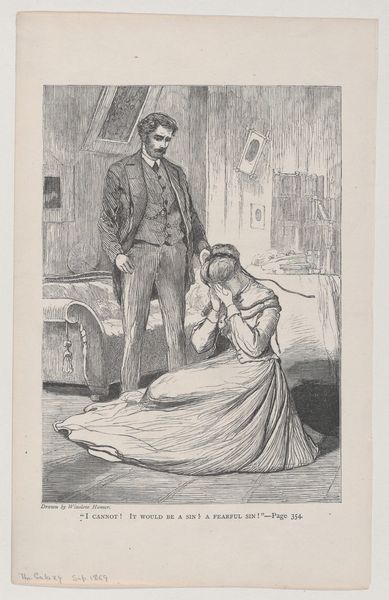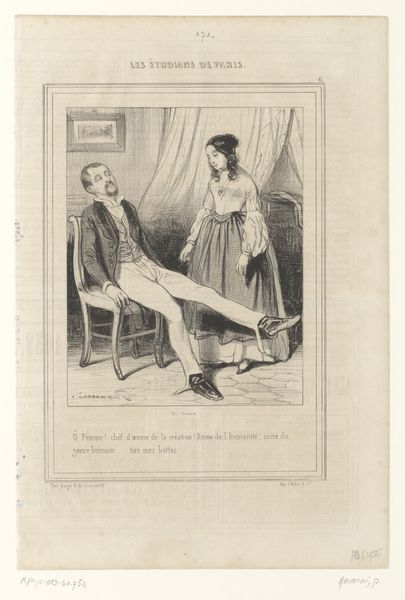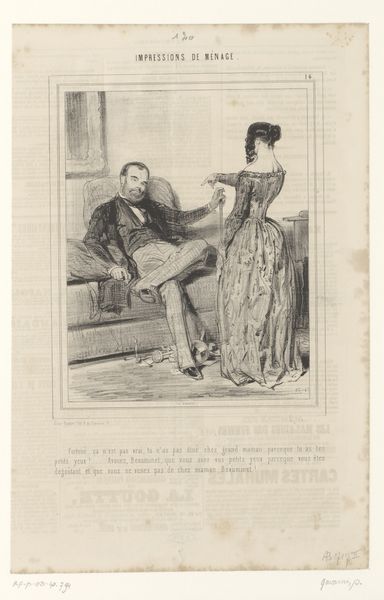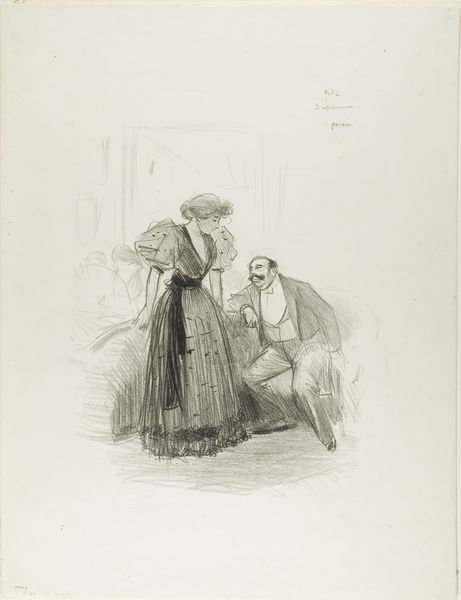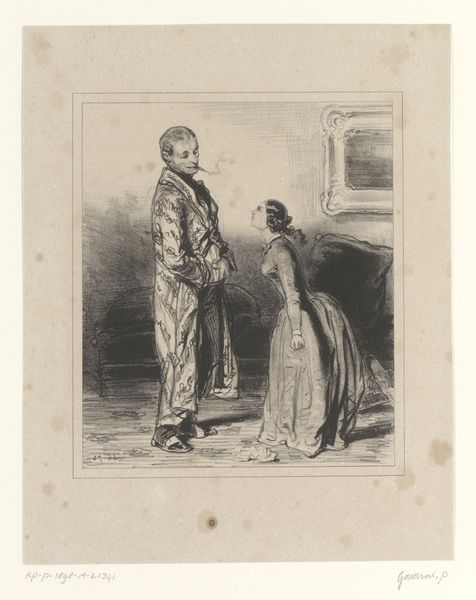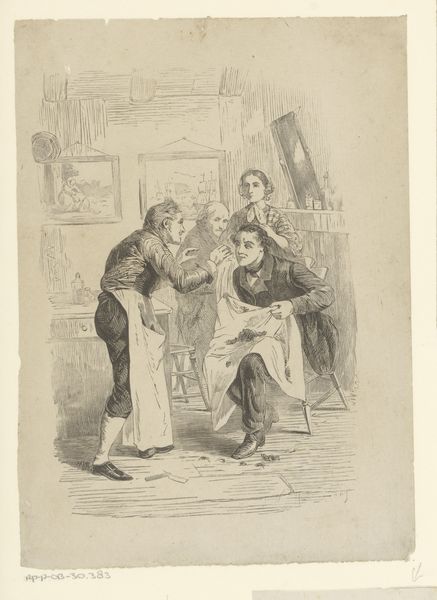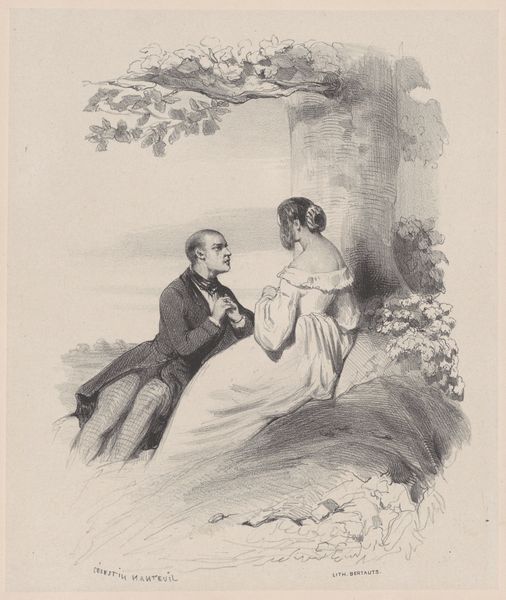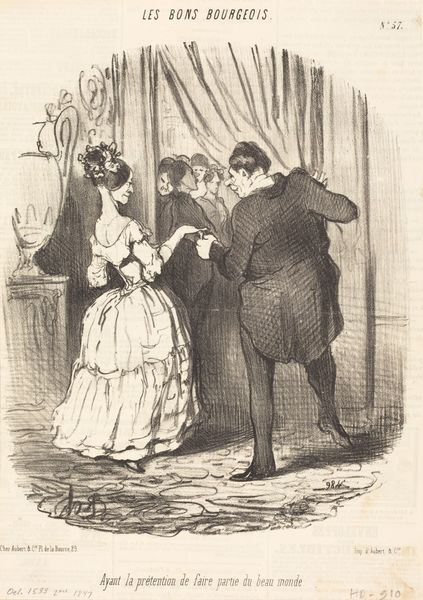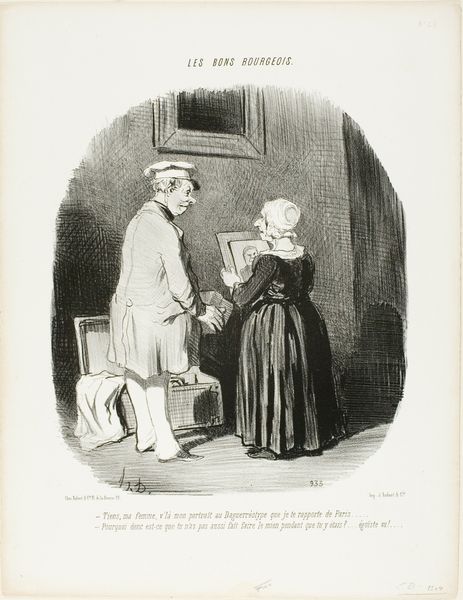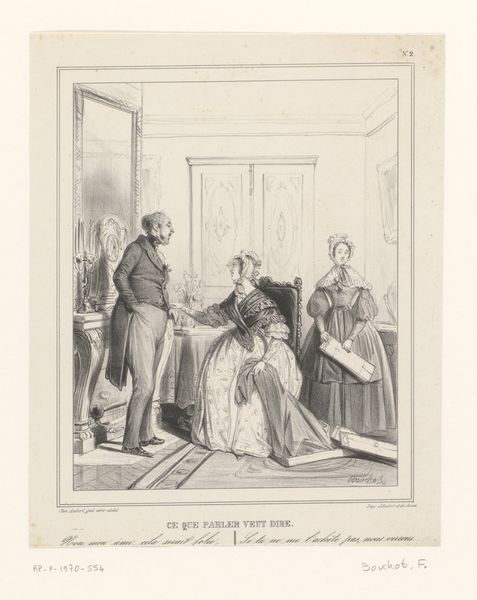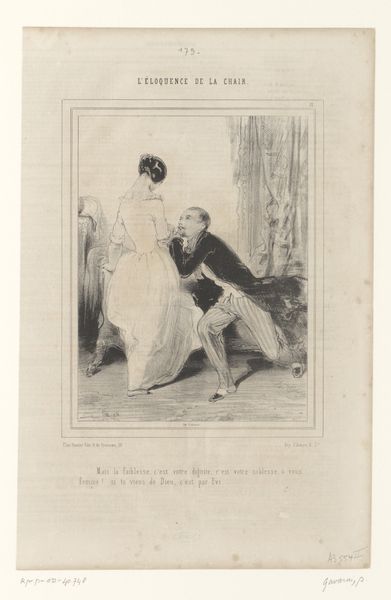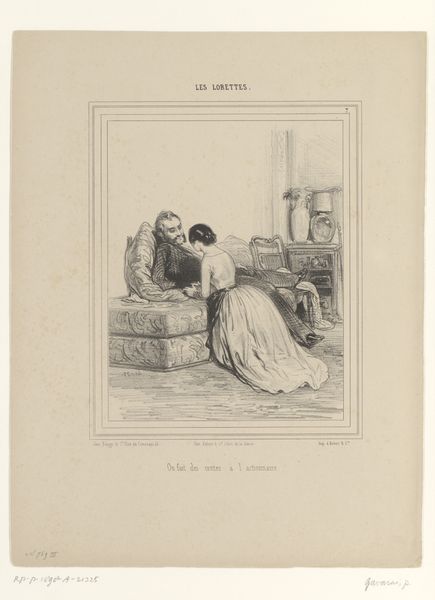
drawing, print, woodcut
#
drawing
#
narrative-art
# print
#
landscape
#
figuration
#
woodcut
#
genre-painting
#
history-painting
#
realism
Dimensions: 6 15/16 x 4 15/16 in. (17.6 x 12.5 cm)
Copyright: Public Domain
Editor: We're looking at Winslow Homer's 1868 woodcut print, "-I Cannot! It Would Be A Sin! A Fearful Sin!-". It has such a melancholic air; a man standing over a kneeling, distraught woman. What’s your read on this, considering it's a print? Curator: For me, the interest lies precisely in the material conditions of its production. This wasn’t meant for a gallery wall. As a woodcut intended for mass circulation, it likely appeared in a periodical, reflecting a growing print culture and its reliance on wood engraving at that time. What's intriguing is not just the scene, but how it speaks to the democratization of art and its availability as a commodity. Did Homer consider how it would affect the labor that produces them, how about women labor, do you see any connections? Editor: That's interesting; I hadn't considered the role of print culture so directly. So, you're saying its significance isn't just in its artistic merit but in its accessibility and circulation as a mass-produced item? Curator: Exactly. The labor involved in creating the woodcut itself is part of the story – the artisanal skill being employed for mass production. Think about the cultural context: who was buying and consuming these prints? What narratives were considered appropriate or marketable for a wide audience at that time? This also begs the question what class the women portrayed belongs to, this print can then potentially reflects or comments upon the lives of middle or upper class. Editor: So, beyond the surface narrative, the artwork points to broader systems of production, consumption, and the dissemination of cultural values? Curator: Precisely. Understanding the ‘how’ and ‘for whom’ is key. The materiality of the print shapes its message and influence, turning it into an agent of social and economic dynamics, and further investigating women’s place. Editor: That’s a really different way to approach it, thank you. I hadn’t thought about how the production informs the reception so directly.
Comments
No comments
Be the first to comment and join the conversation on the ultimate creative platform.
